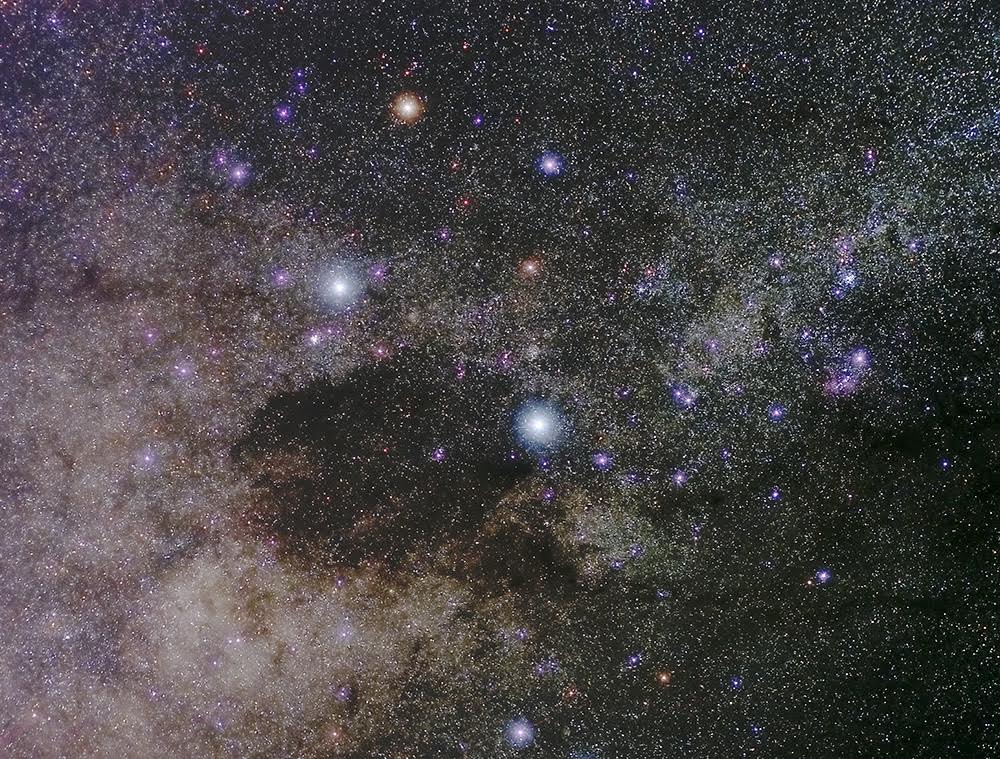
Imagine a young stargazer living at a latitude of 42 degrees north.
Polaris, the fabled North Star, shines far above the northern horizon. Around it wheel the circumpolar constellations of Ursa Major, Cassiopeia, Draco, and Cepheus, ancient landmarks of the northern sky.
In the south, the tail of Scorpius brushes low along the horizon for a few brief months of Summer. Those stars are among the most southerly he can see. But from his star maps, the young stargazer knows that farther south lie some of the greatest wonders of the entire celestial sphere, all the way down to the obscure South Celestial Pole. Yet the poor lad can never see them. The obstinate bulk of the spherical Earth hides them forever.
Yes, surprise, that kid was me!
My first glimpse of the southern sky was with the Honors Astronomy Society, a club for young space nerds run by Mr. DeLuca at the local museum. Whenever he fired up the Spitz projector in the planetarium, I bugged him to lean on the latitude control and swivel south along the face of the planet. I wanted to see those legendary stars of the far southern sky, at least as well as that dinky pinhole projector could manage. It even projected a couple of dim blurs: the Magellanic Clouds.
A year or three later, I achieved my first glimpse of the deep-southern sky on a camping trip near Ocala, Florida with my family. I had calculated that from that latitude, 29 degrees north latitude, Gamma Crucis, the northernmost star in the Southern Cross, should just peep over the southern horizon. I found a spot with a clear view to the south and stood there, waiting, with my uncle, for the star to appear. And so it did. The southern frontier had been drawn back, a little.
Many years later, on a road trip through the western USA, I slept at a roadside picnic area in southern New Mexico. The bed in my beater car was the case of my 6-inch refractor. I woke up in the middle of that very clear night and looked south. There blazed a star of almost unequaled brightness, Canopus, the second brightest star in the sky, unseen by me until then.
Still later, I began to venture down into the Florida Keys for the Winter Star Party. That’s at 24 degrees…far enough to allow many of the main southern sky attractions to peek into view. The entirety of Crux, the Southern Cross, sweeps briefly above the ocean horizon, followed by the famous pair of Alpha and Beta Centauri. Even the Eta Carinae nebula can be seen, shimmering a few degrees above the distant fishing boats and cruise ships sailing between there and Cuba.
These glimpses were like some analogy involving the veils and boas of the coyer variety of exotic dancers, which I probably shouldn’t really go into. Though evocative and tantalizing, they were not fully satisfying, and worse, there was still no sign of the Magellanic Clouds.
The years reeled on. I was pushing 60. I realized I might never have a chance to venture south along the Earth’s curvature far enough to see the far southern sky as it should be seen.
Then, through the Internet, I befriended Tui Allen, a writer and a citizen of New Zealand. She invited me to visit, and to stay with her and her partner, Jeff Tucker, for several weeks. I realized with great delight that I could actually do this.
The flight from Los Angeles was full of promise. I watched as Crux rose from the sea, and rose, and rose, and rose some more, until it was wholly unentangled from the horizon. Hours later I touched down on that remote and exotic land. Tui and Jeff met me at the Auckland airport. We set out for their home in the Waikato countryside. Their house had a back deck that was perfect for stargazing. Quiet, peaceful, and private, usually my only company back there was Tui herself, who liked to lay on the deck and look up, and once a hedgehog who scuttled through.
My first glimpse of the unfettered southern sky was less disorienting than I expected. True, it was weird to look north and see an upside-down Leo skimming over the horizon, and the inverted Orion definitely took some getting used to. As for the newly-revealed wonders of the deep south, I was immediately pretty much oriented to them. It’s not a huge new area of the sky, being equal in size to the circumpolar region I knew from home, and I had studied enough maps over the decades to know my way around a bit.
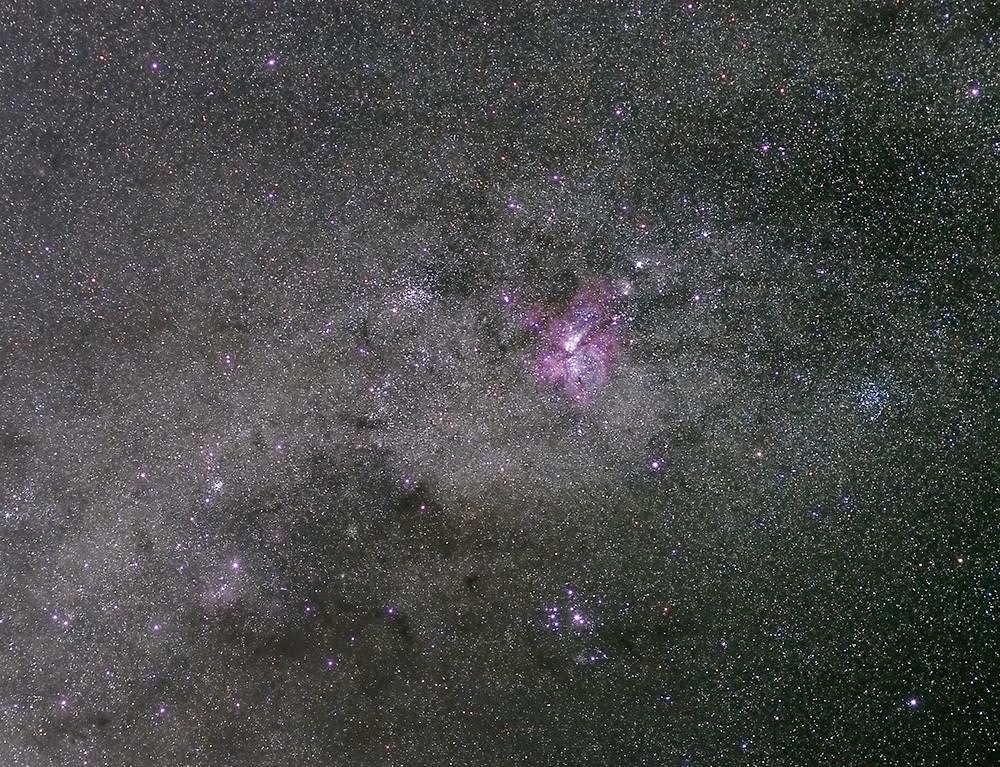
Not to say the sight wasn’t startling. The stretch of Milky Way running through Crux and Carina is among the brightest there is, the most curdled with dark nebulosity, the most crusted with faint stars, and the most spangled with first and second magnitude stars. Seeing it arching almost overhead in that dark sky was a great spectacle. The dark Coal Sack and the wispy Eta Carinae nebula were plainly visible to the naked eye.
And then, finally, there were the Magellanic Clouds, plain and bright as can be. They are often described as looking like detached pieces of the Milky Way. That’s true as far as it goes, but they are nice bright pieces, and they have a peculiar and commanding presence in the sky. The Large Cloud (LMC) has a distinctive barred shape which jumped out at me like the face of a celebrity who I’d only seen in photos.
I learned to my surprise that my Kiwi friends had never really noticed the Clouds before, and had no idea what they were. They thought they were, in fact, clouds. They were startled and impressed to learn that they are neighboring galaxies some 200,000 light-years away. Although they are classified as irregular dwarf galaxies, they are not insignificant. The LMC is 14,000 light-years across and has about one tenth the mass of the Milky Way. It’s the fourth biggest galaxy in our Local Group. The SMC is about half that size.
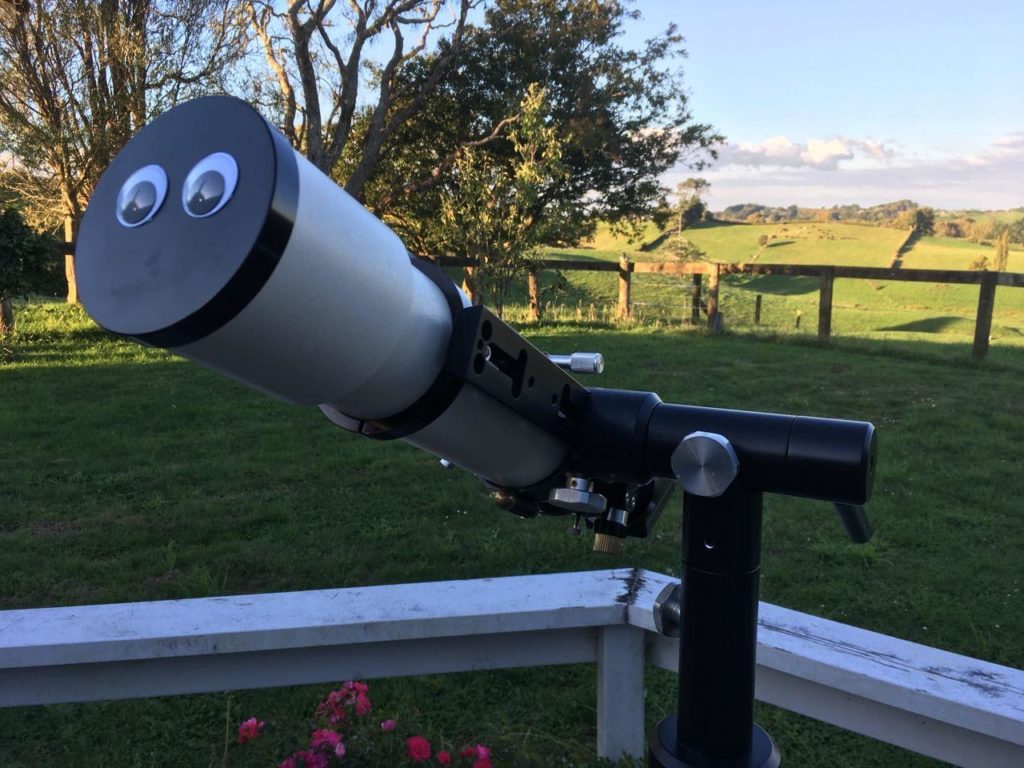
And of course, I brought a telescope! Stowed away in the overhead bin of my Air New Zealand flight was my precioussss, an Astro-Physics Stowaway, a short 92mm apochromatic (a term meaning really, truly free of false color, honest!) refractor, known to some as Scopey. Its alt-azimuth mount was in my checked baggage. With its help I quickly learned that the LMC is the single greatest hunting ground for deep sky objects in the sky. At one fifteenth the distance of the Andromeda Galaxy, the Clouds are the only galaxies beside our own that can be examined in detail with a small telescope. Guided by the Sky Safari app on my phone, I spent night after night poring over the LMC, navigating its maze of clusters and nebulae, trying to keep my bearings and not get lost. Even with such a small telescope, it would have taken me weeks of diligent observing to note everything I could identify within it. As it was, I observed and recorded over twenty objects. The gigantic Tarantula Nebula alone, which sends its glowing tendrils throughout a good fraction of the galaxy, takes time to trace out and interpret. Many fainter nebulae in its vicinity have their own NGC numbers. All are probably part of the same nebular complex, one vastly larger than the Orion Nebula or any other nebula known within the Milky Way.
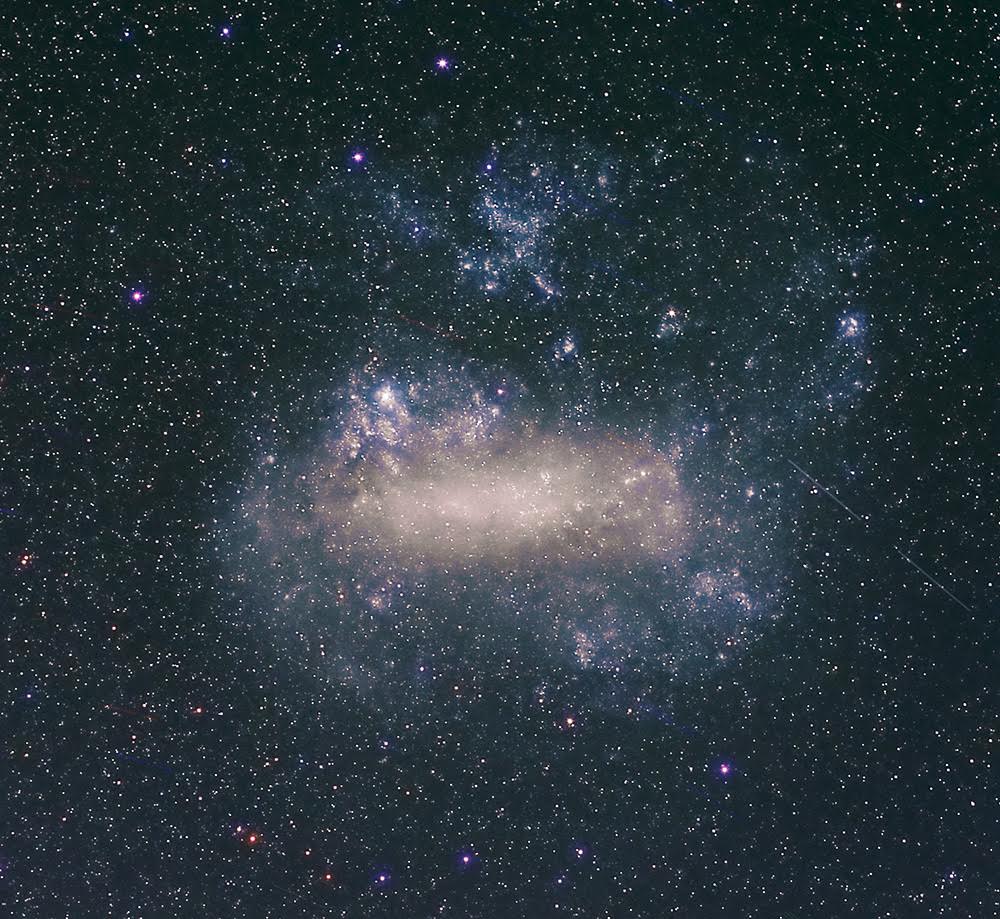
The Small Cloud, being half the size and a bit farther away, offers less to the small telescope, but is still packed with objects. Both galaxies are rich with gas, dust, and star formation. Near the SMC in our sky (though much closer at only 14,000 light-years) is another landmark of the southern sky, the great globular star cluster 47 Tucanae, easily visible to the naked eye as a fuzzy spat of light. Acknowledged as the second brightest globular cluster in the sky, 47 Tuc appeared as a highly condensed mass of innumerable tiny stars in my little refractor, its core very bright.
This description ignores the many spectacular open clusters and nebulae to be found along the southern Milky Way, including the ornate Eta Carinae nebula itself, the only real competitor to the Orion Nebula for visual spectacle, yet invisible to most denizens of North America and Europe.
Finally, Omega Centauri, the king of globular clusters, whose name can be used in conjuring. People living in the southern half of the USA can see this mighty thing drifting quietly along, not far above the southern horizon. I’ve seen it that way many times myself. But…there is no substitute for seeing it riding high in the sky, an easy, diffuse object, clearly not a star. In my telescope at 90x it was a large ball of faint stars, incredibly perfect and serene, and my friend Tui’s favorite thing to look at.
I also learned alittle about the native Maori star traditions. For example, I’m now as likely to view M45 as Matariki than as the Pleiades.
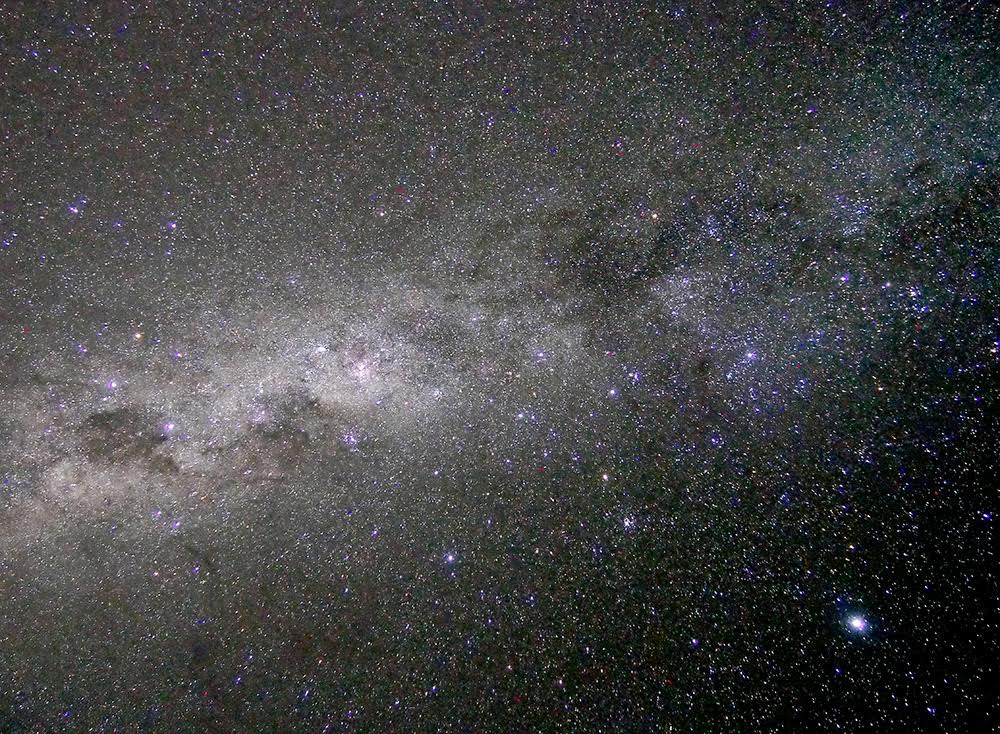
Two years after that trip I was lucky enough to return for an even longer visit. I’m happy to say I now have a friendly relationship with these fabled celestial sights. I hope to return again, to track down and identify the many objects I have yet to see.
I mentioned to my friends that the astronomy club in Miami, Florida, styles itself the Southern Cross Astronomical Society because they can barely see that little kite of stars from there. We agreed that was funny, much as it would be if the Auckland astronomy club called itself the Big Dipper Astronomical Society. It’s a name that doesn’t really play to its strengths…
Share This: